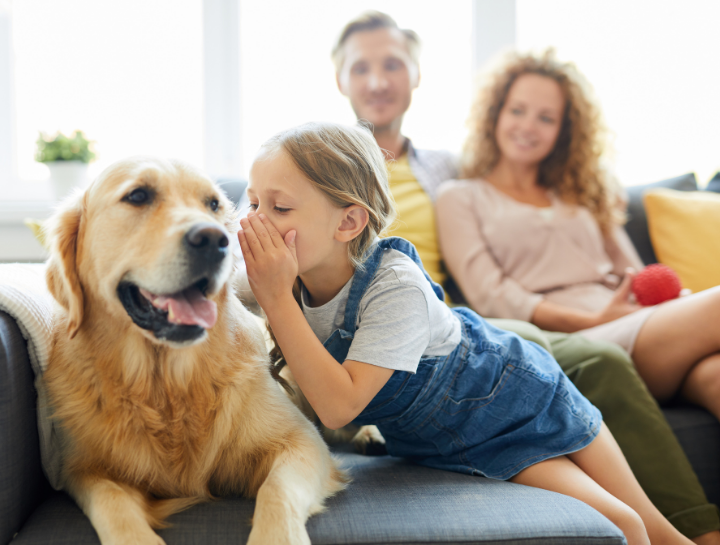Introducing Babies, Kids, & Pets

Kids and pets are a natural mix. Pets can help teach kids empathy, responsibility, and love. They can foster self esteem and confidence in kids as well, and are wonderful, non-judgemental companions for kids of all ages.
By taking some time to prepare and be aware of how to introduce baby and kids to pets, you’ll be setting everyone up for success and a match made in heaven.
Preparing your pet for a new baby
All the new sights, smells, and sounds of a new baby can be confusing for pets. And, although pets can be great learners, they can also become jealous of this new little person. Here are some great ways to prepare yourself and your pet for a new baby:
- Invest in a basic obedience class for your dog, so he learns sit, stay, down, and has a strong recall.
- Make any changes to your pet’s routine before the baby comes home, so he doesn’t associate changes with the baby
- Go through the baby’s routine with your dog in tow before baby comes home – including changing, feeding, and walking with the stroller. Include your pet in the new routine as much as you can.
- Once the baby is born, have someone bring home an article of clothing that the baby has worn (a hat is often used). This acclimates your pet to the smell of the baby in advance.
- Let someone else hold the baby as mother comes in to greet the pet first. Once the greeting has happened, bring baby inside.
- Let the pet get used to the smells, sights, and sounds of the baby for a few days before making formal introductions. For the first few days, let your dog sniff the baby on leash. Cats may or may not show interest. Once your dog is calm, you can let her off the leash to sniff the baby’s foot, carefully supervised of course.
- To foster a positive association with your new little one, give your pet plenty of attention when the baby is around.
- Don’t scold your pet for picking up the baby’s toys. Simply make an exchange for your pet’s favorite toy.
Introducing Kids and Pets
As babies grow, the rules change when it comes to the family pet. Here are some tips for how to help build a bond between your kids and their pets that lasts.
- Have a safety zone for your pet, such as a crate, bed, or area that a pet can retreat to when there too much activity becomes overwhelming. Kids should know that the pet’s special space is off limits.
- Teach your kids not to pull tails, ears, or fur. Children learn by imitation, so pet and talk to your pet gently, and they will, too.
- Teach your kids to never tease a pet by taking away it’s toys, food, or treats.
- Educate children about a dog’s natural body language. Snapping and growling are natural canine behaviors when communicating a warning. Likewise, turning or walking away is another indication that a pet has had enough.
- Never leave even the most trusted dog or cat alone with a baby or child.
- Let your kids participate in age-appropriate pet care. Feeding, watering, walking, playing with and cleaning up after pets all lend themselves to building a bond.
By following these tips you’ll soon have pets and kids that love each other, are great companions, and have lots of fun together. If you are ever worried about the interaction between your kids and pets, please don’t hesitate to contact your team at Advantage Veterinary Center for help.
